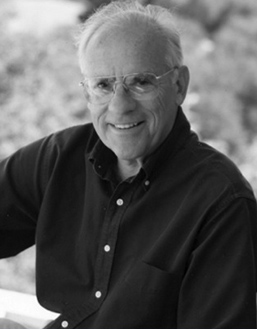
The ideal combination for the founding of an advertising agency is a partnership between an account person, an art director, and a copywriter. This union brings together the advertising disciplines of account management/salesmanship, graphic creation, and the promotional message. The founding trio of Cline, Davis & Mann represented these agency components with Morgan Cline (account service), Clyde Davis (art direction), and Fred Mann (copywriter). (Both Cline and Davis are members of the Medical Advertising Hall of Fame.) CDM has been notably successful thanks to this balance of the abilities of these talented founders, except that, in practice, there was considerable overlapping of the talents they brought to their collaboration.
Jack Slonaker, chairman and COO at CDM, describes their relationship: “Morgan, Fred, and Clyde were really an integrated team. It was like having three creative directors on a team. Morgan was ostensibly the account guy, but with a strong creative bent. Fred was a strong creative, but also had a strong account service and strategic bent. They didn’t silo each other’s work. They had very interchangeable roles.”
Fred Mann was the central writing resource, but also made important contributions on graphic elements. Clyde Davis, the designer in the partnership, recognized and appreciated the breadth of Mann’s creativity: “He wasn’t just a great writer. He had a knack for doing wonderful visuals. It was often that he would come in with a headline and an idea and you supported it with a visual.” Davis points to the Vibramycin campaign created by Mann that relied on a journal insert on heavy stock to “break the book” for added visibility. Mann suggested a blank sheet with a hole burned through by a cigarette against a visual of the bronchial tree with the headline that read: Where there is smoke, there may be bronchitis. Or, the “Infection from the pathogen point of view” campaign, also based on an idea by Mann for Vibramycin, which used visuals from the movie Fantastic Voyage to put the reader inside the oral cavity (or other disease sites). It sparked a series of ingenious pathogen viewpoint ads that ran for a number years.
Mann had studied journalism at Columbia University and worked on a newspaper for the New York City Youth Board before he entered the healthcare agency business at CIBA’s in-house agency in 1956. He was there seven years editing and writing the company publication, State of Mind—a magazine about psychiatry for non-psychiatrists. After time at the Robert A. Becker agency and the Rx unit of Ted Bates, he moved to Klemtner where, as creative director, he worked closely with Cline and Davis. Klemtner went through 2 upsetting ownership changes while they were there and they struck out on their own in 1984 with Pfizer project work on Sinequan. Other assignments came their way from Pfizer, and CDM grew to become one of the company’s major advertising agencies.
Mann’s journalistic background is credited by 2 of his colleagues as shaping his approach to pharmaceutical advertising and his creative style. Ed Wise, president and CEO of CDM, makes this observation: “His whole approach was journalistic. He would dive into the work, dive into the data…into the information. Then, he would emerge, sometime days later, with a fully conceived idea…sometimes with visuals…all put together. He was very private in the way he worked…but deep and journalistic in the way he did his research.”
Joshua Prince, chief creative officer at CDM, adds, “He had a writer’s and a reporter’s instinct. Every time Fred tackled a marketing problem, he believed there was a story to be told. He believed in the magic of narrative. It wasn’t enough to decorate information. I think he believed in [finding] a story that was worthwhile and was relevant to the clinicians who were prescribing the drugs. The lead, or the hook, was always in the headline. The content, what was communicated in the story, was the body copy. And the tagline was the summary of the idea. He did this very effectively in everything he wrote at the agency.”
Those who worked with Mann remember him for his gentlemanly manner, his kindness and mentoring of young employees, and his hosting and storytelling over lunch at his “regular” table at Smith & Wollensky’s. His basic politeness made him uncomfortable in rejecting work.
“He didn’t want to be the bad guy,” says Morgan Cline. Writers and art directors had to learn how they should interpret his responses to their ideas. If he said it was “good” that meant he was unimpressed. If he said he “loved it,” the idea could move on to a final review by Cline, Davis, and himself. It had to do with his extremely high standards.
“He had to be excited about the work,” explains Ed Wise. “It typified how Fred lives his life. He wants to be stimulated. He wants to be excited by the things around him and [in advertising] he had to feel an excitement in the work.”
Mann retired from CDM in 1993. He moved to Florida and then to Sonoma, California, where he lives now and is currently launching an independent, private high school that is expected to grow to 400 students—certainly an exciting endeavor. He has continued his charitable work with the Disabled Businessperson’s Association, with which he has been involved for 15 years, and serves on its board of directors.